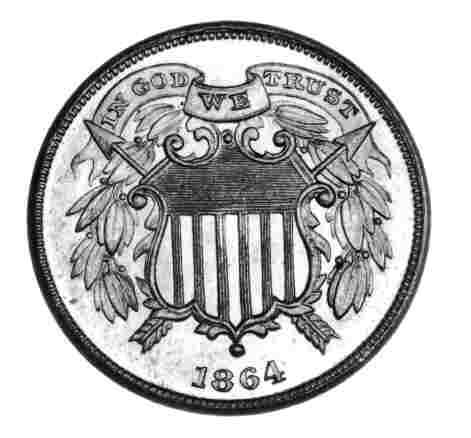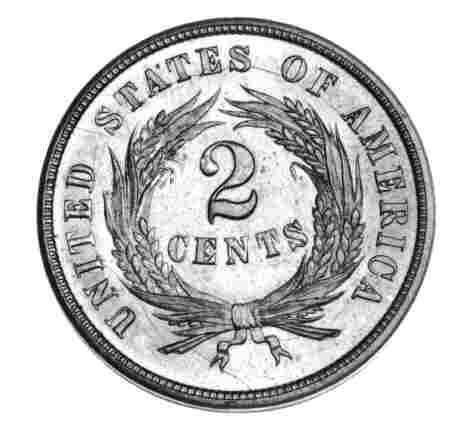

Your Two Cents Worth
The Lost Coin of the Civil War
85 years of nation building threatened
In 1860 Americans had already spent 85 years building a reputation as a hard working, frugal people---and this identity was reflected in the fiscal policies of their government. Nothing was wasted, and as the election of 1860 approached, the entire National Debt was still under 100 million dollars.
|
The Capitol in Washington at the time of Lincoln's election. The Federal Government was so frugal that it had not yet spent the money to complete the Capitol dome! (Photo: Library of Congress) |
To prove it's reliability, the US government of the day paid
off it's debts in specie---gold and silver coins. As a result, prior to the beginning of
the Civil War no one doubted the veracity of the promises of the United States of America. It's word was it's bond, and it's bonds were paid in gold. |
| A nation chooses a new president---in spite of the feared
consequences As the election approached in the fall of 1860, Americans knew there would be trouble if they elected Abraham Lincoln to the Presidency, but elect him they did. Even before the new President was inaugurated many southern states were threatening to secede---and secede they did. War clouds gathered on the horizon, and in times of trouble throughout history 2 things always remain valuable---gold and silver. Almost overnight gold and silver coins disappeared from circulation, ending up buried in back yards or stuffed under mattresses. |
But all these men and cannon extracted a price from the north---a price far too high to be paid in gold and silver. Early in 1862 the Federal Government suspended it's payment of specie and began issuing paper money---"greenbacks"---to settle it's mounting debts, promising the use of paper money would be a temporary measure. After the war, the greenbacks could be redeemed for gold and silver.
|
Lincoln and his cabinet authorized larger and larger appropriations to pay for the Civil War (Photo: Library of Congress) |
Grim reality sets in As the war progressed the costs escalated, and the Federal deficit soared. Silver and gold coins still remained hidden---those who held them feared the government would seize them if they were brought out of hiding---and it became necessary to issue paper money in denominations smaller than a dollar to replace the missing coins. Try to picture what was happening. Think what would happen today if all the coins in circulation disappeared and were replaced with paper money---no wallet would be big enough---a true nightmare! The situation was no different for our Civil War predecessors---they grew to hate paper money and nicknamed these small denomination notes "Shinplasters"---because the only thing they were good for was to use them to apply medicinal remedies to your sore shin! |
|
Fantastic and previously unimagined expenses such as those incurred in the building of "ironclads" (the Monitor is pictured) caused the federal deficit to soar to nearly 3 billion dollars by the end of the war! (Photo: Library of Congress) |
At last! A solution to one problem With all the large denomination greenbacks in circulation it would have been impossible for the Federal Government to issue enough gold and silver coins to completely redeem them---but in 1864 the US Mint came up with a partial solution to the despised shinplasters. Up until 1864 all coins issued by the US Mint contained almost as much in metal value as they were worth by denomination---even the copper Large Cents contained nearly a penny's worth of copper. Before the Civil War the public wouldn't have accepted coins unless their intrinsic value nearly equaled their face value. |
But in 1864 the Mint began striking the Indianhead penny in a bronze alloy. These new pennies cost considerably less than a cent to make---and the government held it's breath when they were released. Would the public accept them?
Well, the public found the new bronze pennies far preferable to the shinplasters--and because the new coins weren't really worth a penny they were not hoarded. To some degree, the new bronze cents began to ease the coin shortage.
In God Is Our Trust
Even with the acceptance of the new pennies the coin shortage continued. In order to ease it further the government decided to produce a new coin--a two cent piece---using the same bronze alloy the Mint was using for the penny.
 The obverse of the Two Cent Piece |
|
 The reverse of the Two Cent Piece |
This much larger coin was designed by James Longacre and featured a wreath on the reverse in which the denomination was placed. On the obverse the designer placed a shield, and on a ribbon above the shield he engraved an abbreviated motto taken from the Star Spangled Banner---In God We Trust.
©1998 CollectSource